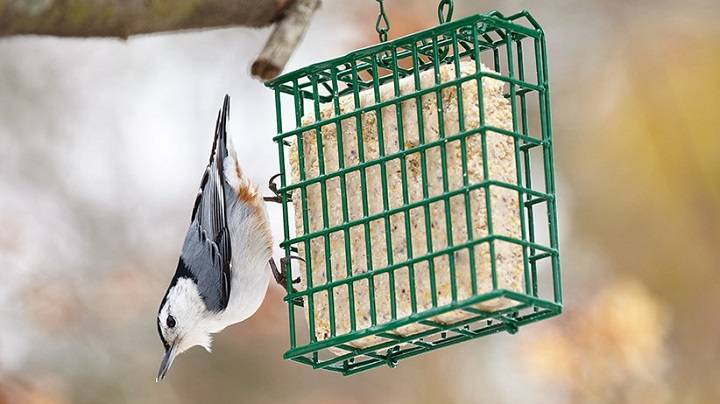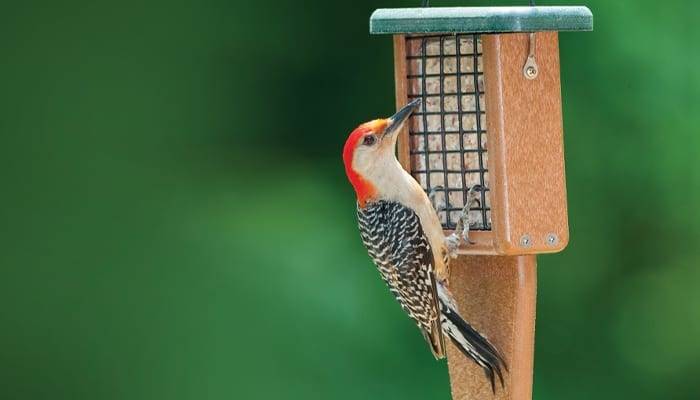As winter’s chill settles over the land, our feathered friends face a daunting challenge—finding enough food to sustain themselves through the cold months ahead. One of the best ways to support birds during this time is by offering suet blocks, a nutrient-rich source of energy that can help them survive the harsh conditions of winter. In this comprehensive guide, we’ll explore the benefits of suet blocks for birds, how to choose the right ones, and tips for attracting a variety of species to your backyard feeding station.
Understanding Suet Blocks
Suet blocks are compact cakes made from a mixture of rendered animal fat, grains, seeds, and other nutritious ingredients. They provide birds with a high-energy food source that is essential for maintaining body heat and fueling their activities during the winter months. Suet blocks are particularly attractive to insect-eating birds such as woodpeckers, nuthatches, and chickadees, but they are also enjoyed by a wide range of other species, including thrushes, finches, and sparrows.
Benefits of Suet Blocks
There are several benefits to offering suet blocks to birds during the winter:
- High Energy Content: Suet blocks are rich in calories and fats, providing birds with the energy they need to stay warm and active in cold weather.
- Nutrient-Rich: Suet blocks often contain a variety of nutritious ingredients, including seeds, nuts, and dried fruits, which can help birds maintain their health and vitality during the winter months.
- Year-Round Appeal: While suet blocks are particularly valuable in winter, they can also be enjoyed by birds throughout the year, making them a versatile and cost-effective food option for backyard feeders.
Choosing the Right Suet Blocks
When selecting suet blocks for birds, it’s essential to choose high-quality products that are free from artificial additives and preservatives. Look for suet blocks that are made from pure rendered animal fat and contain a variety of natural ingredients, such as seeds, nuts, and fruits. Avoid suet blocks that contain hydrogenated fats, as these can be harmful to birds’ health. Additionally, opt for suet blocks that are packaged in sturdy, weather-resistant wrappers to ensure they remain fresh and intact in outdoor feeding stations.
Attracting Birds to Your Feeder
To attract a variety of bird species to your backyard feeder, consider offering a diverse selection of suet blocks in different flavors and formulations. Hang suet blocks from specialized feeders or wire cages, and place them in a sheltered location away from predators and inclement weather. Additionally, provide fresh water for drinking and bathing, as birds rely on clean water sources year-round.
Tips for Feeding Success
Here are some additional tips for feeding birds with suet blocks:
- Monitor Feeder Activity: Keep an eye on feeder activity and replenish suet blocks as needed to ensure birds always have access to food.
- Clean Feeders Regularly: Clean feeders regularly to prevent the buildup of mold, bacteria, and other contaminants that can be harmful to birds’ health.
- Experiment with Flavors: Offer suet blocks in a variety of flavors, such as peanut, berry, and insect, to appeal to different bird species’ preferences.
- Be Patient: It may take some time for birds to discover and become accustomed to suet blocks, so be patient and persistent in your feeding efforts.
Suet Blocks for Birds
Related Post:
Bird Poop Good Luck: Reasons may Wonder You
Bird That Can Fly Nearly Silently: The Secred of Silence
Diving Bird: The Most Common Diving Birds
Suet blocks are a valuable and nutritious food source for birds, especially during the winter months when natural food supplies are scarce. By offering high-quality suet blocks in your backyard feeding station, you can help support birds’ health and well-being while enjoying the beauty and diversity of these feathered visitors. With a little care and attention, suet blocks can provide hours of enjoyment for both you and the birds that grace your garden.




